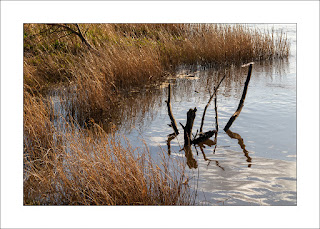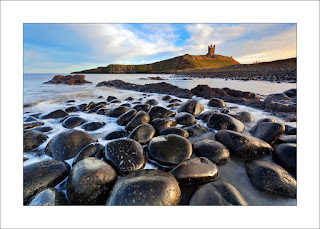In terms of the photography, it was simply as case of enjoying the conditions and these were some of the results:
Friday, 30 April 2021
Early Spring on the River Trent (March 2021)
Thursday, 29 April 2021
Bamburgh Beach (February 2014)
Following directly on from my last post is a series of photographs taken on Bamburgh Beach in 2014. I had captured the sunrise with the castle in the background and finding it difficult to shoot effectively into the sun, I turned around to take advantage of some side lighting.
As explained previously, these posts are a review of old photographic trips, designed to bridge the gap in current photography caused by coronavirus. I have said a few times that I have been surprised by the results, often finding photographs that were left unprocessed at the time, with this selection being another example.
I think I had pre-determined in 2014 that Bamburgh Castle was my subject for the morning to the exclusion of everything else. If I visited the location today I would be less concerned about the ‘classic view’ and more interested in finding different compositions - perhaps being less representational in my approach.
So what interests me now about the selection below is how the sequence progresses. I used the sunlight to capture Black Rocks Point Lighthouse and also the light on rocks looking out to sea. In each of the sea facing shots I placed the distinctive shape of the Farne Islands on the horizon to the right of the compositions. I was making a clear effort, although I don’t recall doing this deliberately, to represent the location - Bamburgh Beach.
As the conditions changed, I walked towards Budle Bay and the style of photography altered. It became less representational. These shots could have been taken on any beach and simply capture the sand patterns. Again, I don’t think this was deliberate, I was just reacting to what was in front of me. However, today I would recognise the distinction and wonder how much better these shots would have been if I had been brave enough to start the morning in Budle Bay with that wonderful golden hour sunlight?
Something to ponder if I get an opportunity to revisit the location...
I finished the morning back at the castle and a record shot of the big dice (relicts I believe from WWII sea defences). It then rained, heavily.
What to do in poor weather on the Northumberland coast? That will be the subject for the next post in this series...
Bamburgh Castle (February 2014)
The second coastal venue on my trip to Northumberland in 2014 was a dawn visit to Bamburgh Castle, another fabulous location for landscape photography.
Morning is by far the best time to photograph the east coast, however, what I had not fully appreciated in 2014 was the angle of the sun during February. To my surprise it was rising just to the left of the castle meaning that most of my shots were directly into the light.
This was unlike previous visits to Northumberland in May/June, when there was more side lighting on the castle with the sun rising over the Farne Islands. Of course, I could have worked all this out prior to the visit but it never occurred to me to make the check.
As a result, many of the photographs I took that morning didn’t get processed at the time. I felt that my main subject, the castle, had no detail and stood in silhouette in most of the shots. Much of the foreground was similar. I tried to resolve this in software but ran into problems with digital noise and a forced processing look to the final photographs.
Seven years later, I treated the photographs as they were, rather than as I wanted them to be in 2014. The results were a pleasant surprise. My favourite is shown below where I concentrated on the real subject which was the morning light and the reflection off the sandy beach - it also just happens to have a castle on the horizon!
With this image completed I started looking at others taken on the same morning, applying a similar approach. This led to a sequence of photographs from dawn through to sunrise (about 45 minutes), all similar in composition but with different foregrounds. These were the dawn shots:
The next sequence charts the sunrise:
Once the sun had fully risen, I did what I would have done today from the outset and turned around to use the light rather than trying fight it - contre-jour. I will show these results in the next post.
Tuesday, 27 April 2021
Northumberland Coast (2014)
The virus situation still impacts on the variety of new photography although it looks more promising as the restrictions start to ease.
Whilst I wait for the opportunities to get out and about I have been delving into old photography trips, mainly from 2014. Many of the photographs were not fully processed at the time and so I treated the review as a virtual photography trip, tracing the locations, and trying to remember some of the photographic decisions that I made at the time.
Inevitably, some of the recollections are vague after seven years but I thoroughly enjoyed the process and the results are a welcome change to the repeated local scenes I have posted during the lockdown period.
A visit to Northumberland is a must for all landscape photographers. I have soft spot for the castles at Bamburgh, Dunstanburgh, and on Lindisfarne having visited them on a school trip. Even as a child I was impressed by the history and the settings and then as an adult starting digital photography it was one of the locations that inspired many years of landscaping.
This first set of photographs from 2014 concentrates on Dunstanburgh Castle from Embleton Bay starting with a classic composition of the castle with the wonderful dolerite boulders in the foreground. The boulders are best captured when they are shiny wet from a high tide with a convenient, but ancient, fold in the rock providing a nice flat vantage point for the shots - shown below in both colour and black and white:
The coastal marram grass also provided foreground interest for the castle as did an old WWII pillbox which contrasted nicely with the defences from a different era:
The rest of the afternoon was spent on the Embleton Bay beach as the tide retreated. Being February it was completed deserted leaving the wet sand pristine. The only footprint where mine and was careful to plan the route around the beach to avoid spoiling the shots with boot prints:
One of the joys of doing reviews of old photography is finding photographs that hadn’t previous been processed. This tends to happen when the photographs have similar compositions and where I had picked out only one or two for printing or posting online back in 2014. This blog format allows more flexibility to chart a sequence of shots which in this case focuses on the reflected light in the wet sand. All were taken over a 40 minute period with the last shot taken at dusk:
































































